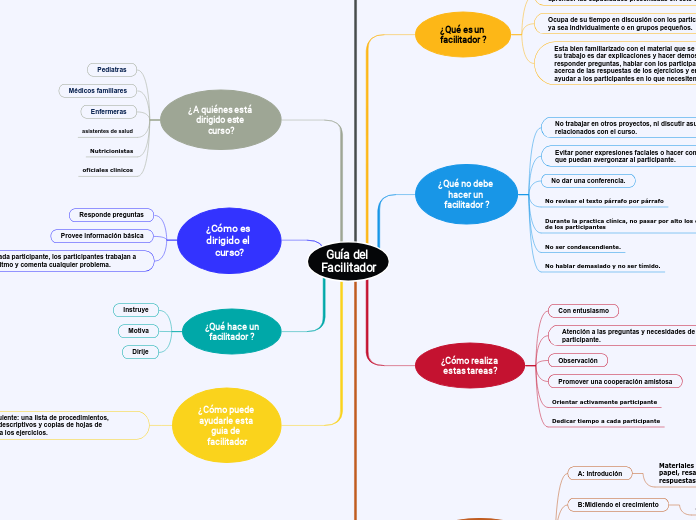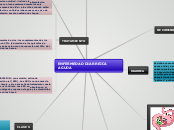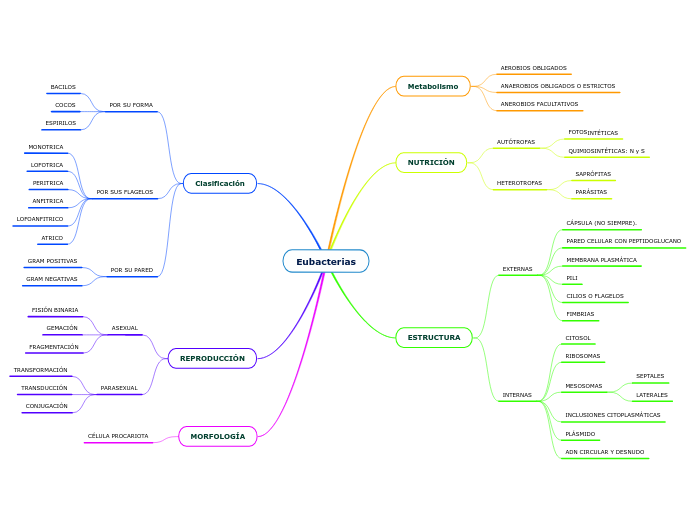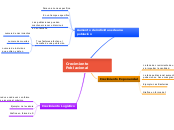Objetivo : Una Guía del Facilitador, en la cual se describen las actividades que el facilitador debe desarrollar durante la planificación e implementación de un taller de réplica en su comunidad, lugar de trabajo o área de acción.
Guía del Facilitador
The Solar System is the gravitationally bound system of the Sun and the objects that orbit it, either directly or indirectly. Of the objects that orbit the Sun directly, the largest are the eight planets, with the remainder being smaller objects, the dwarf planets, and small Solar System bodies.
¿Cómo puede ayudarle esta guia de facilitador
Saturn is known most for its rings.
Galileo Galilei first thought it was an object with three parts: a planet and two large moons on either side.
Not knowing he was seeing a planet with rings, the stumped astronomer entered a small drawing — a symbol with one large circle and two smaller ones — in his notebook.
The rings are made of ice and rock and scientists are not yet sure how they formed. The gaseous planet is mostly hydrogen and helium.
Incluye lo siguiente: una lista de procedimientos, lineamientos descriptivos y copias de hojas de respuesta para los ejercicios.
¿Qué hace un facilitador ?
Uranus is an oddball. It has clouds made of hydrogen sulfide, the same chemical that makes rotten eggs smell so foul.
It rotates from east to west like Venus. Its tilt causes extreme seasons that last 20-plus years, and the sun beats down on one pole or the other for 84 Earth-years at a time.
Methane in the atmosphere gives Uranus its blue-green tint. It also has 13 sets of faint rings.
Dirije
How long does it take for Uranus to go around the sun?
Motiva
A planet's day is the time it takes the planet to rotate or spin once on its axis.
Write down Uranus's day measured in Earth days.
Instruye
¿Cómo es dirigido el curso?
Neptune is about the size of Uranus and is known for supersonic strong winds.
Neptune is far out and cold.
The planet is more than 30 times as far from the sun as Earth.
Neptune was the first planet predicted to exist by using math, before it was visually detected. Neptune is about 17 times as massive as Earth and has a rocky core.
Ayudar a cada participante, los participantes trabajan a su propio ritmo y comenta cualquier problema.
Neptune has thirteen moons that we know of and one more waiting for confirmation.
The largest moon is slightly smaller than Earth's Moon and has active volcanoes which erupt like geysers and eject nitrogen frost over the surface.
Name this moon and at least 4 others.
Provee información básica
A planet's day is the time it takes the planet to rotate or spin once on its axis.
Write down Neptune's day measured in Earth days.
Responde preguntas
¿A quiénes está dirigido este curso?
It was once considered a planet but in August 2006 the International Astronomical Union (IAU) downgraded the status of Pluto to that of “dwarf planet.”
Pluto is unlike other planets in many respects. It is smaller than Earth's moon; its orbit is highly elliptical.
It's a cold, rocky world with a tenuous atmosphere. Pluto is a very active ice world that's covered in glaciers, mountains of ice water, icy dunes, and possibly even cryovolcanoes that erupt icy lava made of water, methane or ammonia.
oficiales clinicos
Nutricionistas
asistentes de salud
Enfermeras
The dwarf planet Pluto has five moons.
Name these moons.
Médicos familiares
A planet's day is the time it takes the planet to rotate or spin once on its axis.
Write down Pluto's day measured in Earth days.
Pediatras
Materiales de instruccion de la guia de facilitador
Jupiter is a giant gas world that is the most massive planet in our solar system.
Its swirling clouds are colorful due to different types of trace gases.
And a major feature in its swirling clouds is the Great Red Spot, a giant storm more than 10,000 miles wide. It has raged at more than 400 mph for the last 150 years, at least.
Jupiter has a strong magnetic field, and with 75 moons, it looks a bit like a miniature solar system.
F:Hojas de respuestas
E:Folleto de fotografías
D: Brindando consejería, sobre crecimiento y alimentación
Jupiter has a strong magnetic field, and with 75 moons, it looks a bit like a miniature solar system.
Name the 4 most known moons.
Material de apoyo: Tallímetro, infantometro
Investigación de las causas de desnutrición, junto a Investigación las causas de sobrepeso
C: Interpretando los indicadores de crecimiento
How long does it take for Jupiter to go around the sun?
No existe material adicional a distribuir
B:Midiendo el crecimiento
A planet's day is the time it takes the planet to rotate or spin once on its axis.
Write down Jupiter's day measured in Earth days.
Registro del crecimiento de los niños, Calculadora de la edad de la OMS.
A: introdución
Materiales tales como gafete, lápices, bolígrafos, papel, resaltadores, sobres para las hojas de respuestas.
¿Cómo realiza estas tareas?
Mars is a cold, desert-like place covered in dust. This dust is made of iron oxides, giving the planet its iconic red hue.
Mars shares similarities with Earth: It is rocky, has mountains, valleys and canyons, and storm systems ranging from localized tornado-like dust devils to planet-engulfing dust storms.
Dedicar tiempo a cada participante
Orientar activamente participante
Promover una cooperación amistosa
Mars has two small moons.
Name these moons.
Observación
How long does it take for Mars to go around the sun?
Atención a las preguntas y necesidades de cada participante.
A planet's day is the time it takes the planet to rotate or spin once on its axis.
Write down Mars's day measured in Earth days.
Con entusiasmo
¿Qué no debe hacer un facilitador ?
Earth is a water world, with two-thirds of the planet covered by oceans.
It's the only world known to harbor life.
Earth's atmosphere is rich in nitrogen and oxygen.
Its name originates from 'Die Erde,' the German word for 'the ground.'
Earth may once have had two moons, nowadays it has just one.
No hablar demasiado y no ser tímido.
No ser condescendiente.
Durante la practica clínica, no pasar por alto los errores de los participantes
No revisar el texto párrafo por párrafo
No dar una conferencia.
How long does it take for Earth to go around the sun?
Evitar poner expresiones faciales o hacer comentarios que puedan avergonzar al participante.
A planet's day is the time it takes the planet to rotate or spin once on its axis.
Write down the Earth's day in hours.
No trabajar en otros proyectos, ni discutir asuntos no relacionados con el curso.
¿Qué es un facilitador ?
Venus is Earth's twin in size and has no moons.
Its surface has various mountains and volcanoes. Because of its thick, toxic atmosphere that's made of sulfuric acid clouds, Venus is an extreme example of the greenhouse effect. The average temperature on Venus' surface is 900 F (465 C).
Venus spins slowly from east to west, the opposite direction to most of the other planets.
The Greeks believed Venus was two different objects — one in the morning sky and another in the evening. Because it is often brighter than any other object in the sky, Venus has generated many UFO reports.
Esta bien familiarizado con el material que se enseña, su trabajo es dar explicaciones y hacer demostraciones, responder preguntas, hablar con los participantes acerca de las respuestas de los ejercicios y en general ayudar a los participantes en lo que necesiten.
How long does it take for Venus to go around the sun?
Ocupa de su tiempo en discusión con los participantes , ya sea individualmente o en grupos pequeños.
A planet's day is the time it takes the planet to rotate or spin once on its axis.
Write down Venus's day measured in Earth days.
Es una persona que ayuda a los participantes a aprender las capacidades presentadas en este curso
¿Qué métodos de instrucción son usados en este curso?
Mercury is the smallest, only a little bit larger than Earth's moon. Mercury has no moon.
It experiences dramatic changes in its day and night temperatures: Day temperatures can reach a scorching 840 F (450 C), which is hot enough to melt lead. Meanwhile, on the night side, temperatures drop to minus 290 F (minus 180 C).
It also has a very thin atmosphere of oxygen, sodium, hydrogen, helium, and potassium and can't break-up incoming meteors, so its surface is pockmarked with craters, just like the moon.
Discusiones, dramatizaciones, demostraciones y ejercicios clínicos.
How long does it take for Mercury to go around the sun?
Ejercicios escritos
A planet's day is the time it takes the planet to rotate or spin once on its axis.
Write down Mercury's day measured in Earth days.
Lectura
Our Solar System has eight “official” planets which orbit the Sun.
Each planet is at a different distance from the sun. Name its position.









